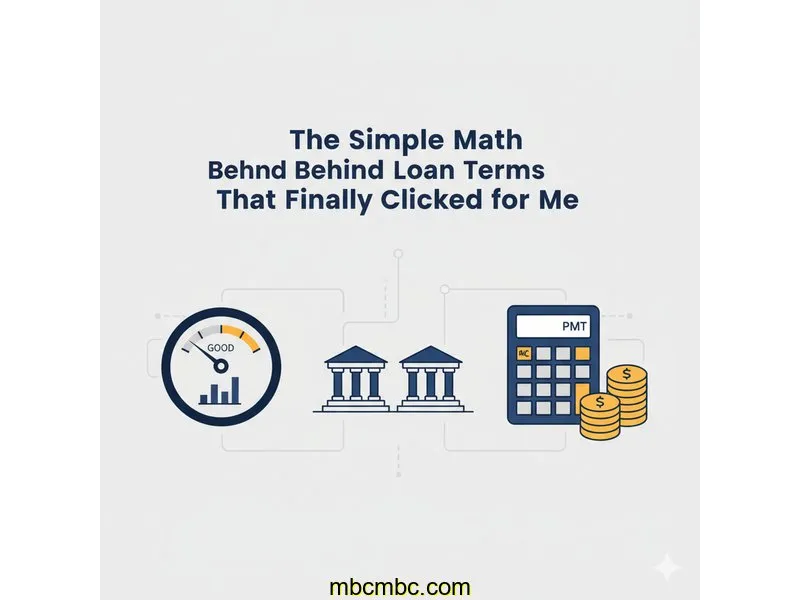
Auto Loan Calculator
Calculate payments over the life of your Loan
Home Blog Privacy Terms About Contact
Calculate payments over the life of your Loan
Home Blog Privacy Terms About ContactPublished on October 14, 2025

It all started with a simple conversation over coffee. My friend was excited about a personal loan they’d secured for a home project. "I got a great deal," they said, "the monthly payment is so low!" I asked about the details, and they mentioned it was a five-year term. I had been looking into similar projects and had run some numbers on a four-year term, and my estimated payment was significantly higher. For a moment, I felt a pang of… something. Was I missing a trick?
My friend’s loan amount was nearly identical to what I was exploring, and the interest rate was in the same ballpark. Yet, their monthly payment was comfortably lower. My brain went into overdrive. How could that be? A lower payment for the same amount of money sounds better, right? But if it takes longer to pay back, doesn't that mean you're paying for a longer time? And if you're paying for a longer time, aren't you paying more interest?
I tried doing some quick math on a napkin, but I got lost immediately. I was multiplying and dividing, but I didn’t really know what I was looking for. This wasn't about making a financial decision; it was about a fundamental calculation I just couldn't grasp. I felt a genuine need to understand the mechanics behind the numbers. My goal became clear: I needed to figure out the mathematical relationship between the loan term, the monthly payment, and the total cost of borrowing. This is just my journey of learning how the calculations work, not a shred of financial advice.
My curiosity was officially piqued. I went home and started plugging numbers into the first online loan calculator I could find, determined to solve this puzzle for my own understanding.
My first stop was a basic loan calculator. I decided to create a concrete, side-by-side scenario to replicate the conversation with my friend. I used a hypothetical loan amount of $16,850 and an interest rate of 7.8%. First, I plugged in the 60-month (5-year) term my friend had mentioned.
The calculator immediately spit out a monthly payment: $338.91. Then, I changed only one variable: the term. I reduced it to 48 months (4 years). The new monthly payment was $409.52. My initial reaction was exactly what my friend had felt: the $338 payment looked so much more appealing! It was over $70 cheaper each month. On the surface, the 5-year loan seemed like the obvious "winner."
This is where my confusion peaked. I stared at those two numbers, and my logic felt broken. I knew, instinctively, that paying for an extra year had to have a cost, but the calculator's most prominent number—the monthly payment—was telling a different story. I was focusing entirely on the wrong metric. I was looking at the monthly cash flow impact, not the overall cost of the loan itself.
The frustration was real. I felt like the calculators were showing me an answer, but I didn't know how to read it properly. What was I missing? There had to be another field, another number that would reveal the hidden story. I clicked around the calculator page, expanding every "details" section I could find, searching for the piece of the puzzle that would make it all make sense. I wasn't trying to choose a loan; I was trying to understand the mathematical engine running under the hood.
After a few minutes of clicking, I found it. Tucked away under the main results was a link that said "Show Amortization Schedule." I clicked, and a huge table of numbers appeared. More importantly, at the top of this detailed view were summary boxes. One was labeled "Total Principal Paid" ($16,850, obviously). And right next to it was the magic phrase I was looking for: "Total Interest Paid." This was the breakthrough moment.
I realized that the monthly payment was just one part of a much larger equation. The 'Total Interest Paid' was the true cost of borrowing the money over a specific period. It was the fee for using the bank's money, spread out over dozens of months. I quickly ran my two scenarios again, this time ignoring the monthly payment and focusing solely on this new, revealing number. The results were startlingly clear and finally gave me the context I was missing.
The table made it all clear. The core concept I'd been missing is that interest is calculated on the remaining balance. With a longer-term loan, the monthly payments are smaller. A smaller payment means you are chipping away at the principal balance more slowly. Because the balance stays higher for longer, the amount of interest calculated each month is also higher over the life of the loan. Those extra 12 payments on the 5-year loan weren't just paying down principal; they were 12 more opportunities for interest to accumulate.
Looking at the full amortization schedules side-by-side was even more revealing. For the 48-month loan, the very first payment of $409.52 included $109.54 in interest and $299.98 in principal. For the 60-month loan, the first payment of $338.91 also had $109.54 in interest, but only $229.37 went to principal. I could visually see how the shorter-term loan attacked the principal balance more aggressively from the very beginning, which in turn reduced the base on which future interest was calculated.
Now I could do the math that mattered. The monthly payment for the 5-year loan was $70.61 lower. That's the benefit. But what was the cost? The total interest for the 5-year loan ($3,484.60) was $677.64 higher than the total interest for the 4-year loan ($2,806.96). For me, seeing this specific number—$677.64—was the ultimate "aha!" moment. It quantified the trade-off. It wasn't about good or bad; it was about understanding that the convenience of a lower monthly payment had a specific, calculable cost.
To make sure I really understood, I created a completely different scenario. I imagined a loan for $12,200 at 6.5% interest. First, I ran the numbers for 36 months: a $370.21 payment and $1,127.56 in total interest. Then, I ran them for 48 months: a $283.99 payment and $1,431.52 in total interest. The pattern held true. The longer term had a lower monthly payment but cost an extra $303.96 in total interest. The math was consistent, and my understanding was finally solid.
This journey down the calculation rabbit hole was incredibly empowering. I didn't learn what decisions to make, but I learned how the underlying mechanics work, which feels far more valuable. Here are the key lessons about the calculations that I've taken away from this process:
The most straightforward way I found is to first calculate your total payments. You do this by multiplying your monthly payment by the number of months in your loan term. Then, you subtract the original loan amount (the principal) from your total payments. The result is the total interest you'll pay. For example, ($409.52 x 48 months) - $16,850 = $2,806.96 in interest.
It's because interest is calculated on your outstanding balance in each payment period. A longer term means smaller monthly payments, which means your balance reduces at a slower pace. Since the balance stays higher for a longer period, you end up paying interest on a larger amount of money over more months, causing the total interest to increase.
In my exploration, I found that most do, but you sometimes have to look for it. Basic calculators might only show the monthly payment. I discovered the best ones have a "details" or "show amortization schedule" button that reveals a full breakdown, including the total principal, total interest, and total overall payments.
Early on in any loan, a larger portion of your payment goes toward interest. As you pay down the principal balance, the amount of interest calculated each month decreases, and a larger portion of your fixed payment starts going toward the principal. A longer loan term stretches out this early, interest-heavy phase for more months.
I learned the best way is to be methodical. Enter the same loan amount and interest rate for every scenario. Then, change only the loan term (e.g., 36 months, 48 months, 60 months). For each term, write down both the monthly payment and the total interest paid. This allows you to see the direct mathematical trade-off between the two.

Looking back, my confusion started with a simple question about a number. What I ended up learning was a fundamental concept about how loan math works. My biggest takeaway from this whole exercise was the importance of looking at the right numbers. I was so fixated on the monthly payment that I was completely blind to the bigger picture—the total cost of borrowing.
It was incredibly empowering to move from being confused by a friend's comment to being able to explain, with specific numbers, exactly how two different loan terms could result in different outcomes. The online calculators weren't just tools for getting an answer; they were interactive classrooms that allowed me to experiment with variables and see the results instantly.
If you've ever felt that slight fog of confusion around financial numbers, I encourage you to just start playing with the calculators. Don't worry about making a "decision." Just get curious about how changing one number makes all the others move. That process of discovery was, for me, the best way to build confidence and understanding.
This article is about understanding calculations and using tools. For financial decisions, always consult a qualified financial professional.
Disclaimer: This article documents my personal journey learning about loan calculations and how to use financial calculators. This is educational content about understanding math and using tools—not financial advice. Actual loan terms, rates, and costs vary based on individual circumstances, creditworthiness, and lender policies. Calculator results are estimates for educational purposes. Always verify calculations with your lender and consult a qualified financial advisor before making any financial decisions.
